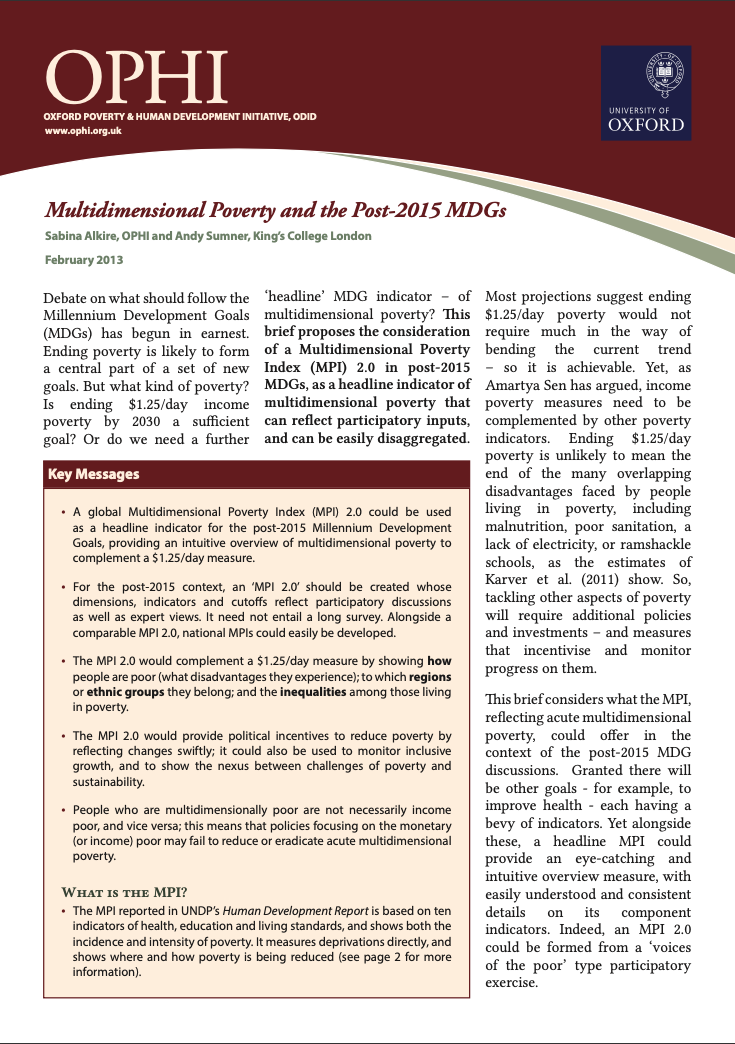Multidimensional Poverty and the Post-2015 MDGs (4 pages)
This briefing proposes the consideration of a Multidimensional Poverty Index (MPI) 2.0 (now known as the MPI 2015+) in post-2015 MDGs, as a headline indicator of multidimensional poverty that can reflect participatory inputs, and can be easily disaggregated. Most projections suggest ending $1.25/day poverty would not require much in the way of bending the current trend – so it is achievable. But ending $1.25/day poverty is unlikely to mean the end of the many overlapping disadvantages faced by people living in poverty, including malnutrition, poor sanitation, a lack of electricity, or ramshackle schools. This briefing considers what the MPI, reflecting acute multidimensional poverty, could offer in the context of the post-2015 MDG discussions. Granted there will be other goals - for example, to improve health - each having a bevy of indicators. Yet alongside these, a headline MPI could provide an eye-catching and intuitive overview measure, with easily understood and consistent details on its component indicators. Indeed, an MPI 2015+ could be formed from a ‘voices of the poor’ type participatory exercise. The MPI 2015+ would complement a $1.25/day measure by showing how people are poor (what disadvantages they experience); in which regions or ethnic groups they are poor; and the inequalities between those living in poverty. It would add value for policymakers, providing political incentives to reduce poverty by reflecting changes swiftly; it could also be used to monitor inclusive growth, and to show the nexus between challenges of poverty and sustainability.
Citation: Alkire, S. and Sumnber, A. (2013). 'Multidimensional poverty and the Post-2015 MDGs', OPHI Briefing 11, Oxford Poverty and Human Development Initiative (OPHI), University of Oxford.
Also published in Development, 2013, Vol. 56(1), pp. 46–51.



